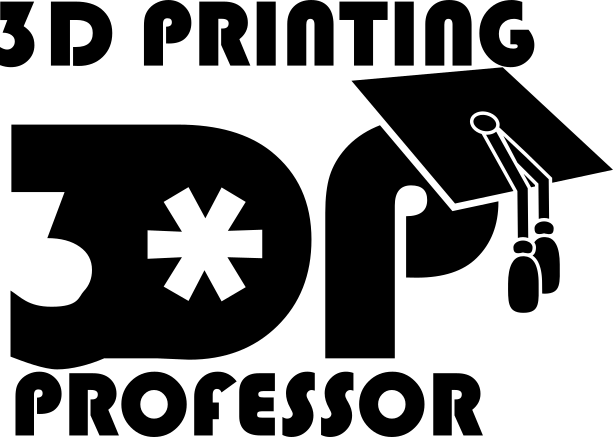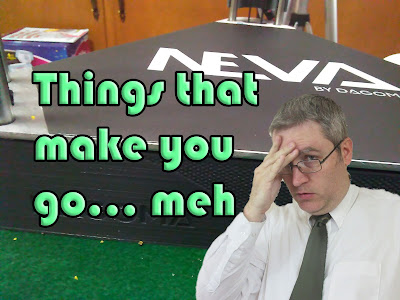Like I said in the video, it’s funny the things I forget when I don’t take notes and read from them. The Dagoma Neva is an okay 3D printer. It’s definitely bold. It might even be a great printer but for one thing it’s missing. One thing that makes me hesitant to give it a more positive review.
No heated build plate.
Full disclosure, this discussion about heated build plates may end up being the topic of a future video. Consider this me working out my notes on the subject.
Perhaps you wonder why a heated build plate is a big deal to me. Why do I care about it so much that it will take what might be an excellent printer give it a “meh” review? Would I have given this printer higher marks if it had a heated bed?
Let’s start from the very beginning. The beginning of the home 3D printer market.
When 3D printing first came around, with RepRaps and Thing-o-matics, they all printed ABS. Not because we liked ABS. It was stinky and shrinky and difficult to print with. But it was all we had. PLA literally didn’t exist back then. So we built enclosures to keep the breeze away and used heated build plates to give us some environmental control. We avoided thin walls where we could and there was even tales of people holding a hair drier to their parts as they printed to insure that they’d succeed. It was the only way.
With these heated build plates a couple of solutions were discovered for sticking prints to them. First, Kapton tape was the build surface of choice. But Kapton was thin and broke easily, it needed to be changed often. So we got thicker Kapton. Then we discovered that Kapton eventually stops sticking so well. Well, no problem, just smear it with some old ABS mixed liberally with acetone to make a messy slurry. Then someone started using glass plates covered in Kapton for their build plates, because they were flat. Then someone wondered why even use the Kapton if the print was actually just sticking to the slurry, so the Kapton was taken out of the equation. Then some enterprising genius discovered that the polymer in Aquanet Extra Hold hair spray not only stuck well, but when it cooled it actually released the part. Sure, it made your maker hole smell like a hair salon, but it worked great.
Then PLA was developed. It was the first polymer specifically designed for 3D printing. It wasn’t shrinky like ABS and it actually kinda smelled nice when it printed. And best of all, you didn’t need a heated build plate to use it. You heard me, no heated build plate. Just a little blue painters tape and it stuck like a champ. In fact, this stuff loved a constant breeze on it to keep it nice and cool as soon as it leaves the nozzle. It was like the anti-ABS. Makerbot was so sold on the viability of PLA as a build material that their second generation of Replicator printers came with no heated build plate.
And that, in my opinion, was a mistake.
The transition to PLA dominance was slow. Those of us who had the old ABS-designed printers didn’t have the nozzle fan, so we had to jerry-rig solutions that were often times somewhere between questionable and an outright bad idea. So many of us just cracked a window and kept printing ABS. But some of the more adventurous among us discovered that they didn’t need to turn off their build plates, just turn them down, and the print worked. Plus, they still got the benefit of the state change in their hairspray. But even those using blue tape discovered it worked well with just a little heat on the build plate. It took a while before we realized it, but with a little heat the whole printing process was better, even with PLA. Prints adhered to the build plate well, layers didn’t curl and get knocked off as much, and you didn’t come home to a spaghetti print as often. Even with PLA a heated print bed makes the whole experience more successful.
However, Makerbot, the biggest name in home 3D printers at the time, had set the precedent. They established that you don’t need a heated bed anymore. So every manufacturer looking to save a buck, but not knowing the realities of using 3D printing, dropped their heated build plate.
Eventually BuildTak comes out, a great build surface that holds prints and releases them well, provided there’s a state change. Just like hair spray, it changes to hold the print while it’s a little warm, and releases when it cools down. But unlike hairspray it’s more durable and you don’t need to keep reapplying it. So manufacturers start putting BuildTak on their printers. It becomes so ubiquitous that even manufacturers who cut corners by not heating their build plate are using it. Even though it doesn’t really work.
What’s the most common problem people have with their Neva? The problem that they spend an inordinate amount of time trying to figure out the solution to? Just take a look at the facebook forum. Every other post is either asking for help with the build plate, mentioning how to fix the adhesion problem with the build plate, or how they destroyed their build plate trying to overcome it. Not me. As soon as I saw that this build plate wasn’t heated, and I saw the suggestions on how to fix it, I ignored all that and slapped blue tape on this thing. And it was all good because re-leveling this thing is so stupid easy, just hold down the button while you plug it in.
See, again, they make this corner-cutting decision, but it’s okay because the fix for it is also super easy. I really don’t know how to feel about this printer. I definable can’t give it a whole-hearted endorsement, but nether would I be able to say that anyone who bought it had made a particularly bad decision. It’s just… meh.
Since this is now technically a part of March MadMess, here’s the links for that:
- FLSun S/Micromake L2 – $562 on AliExpress, $638 at Gearbest, or Amazon
- Creality3D CR-10mini – $350 with coupon cr10mini3d, AliExpress, $460 on Amazon
- Creality3D CR-10 – $430 with coupon Cr10bluejk, AliExpress, $486 on Amazon
- Creality3D CR-10S – $540 at Gearbest, AliExpress, $600 Amazon
- Tronxy X5S Kit – $340 with coupon TronxyX5SPRE, $337 on AliExpress, or $461 Amazon
- Geeetech 301 Delta Kit – 363 on AliExpress or Amazon
- Anet A8 Kit – $160 at GearBest, AliExpress, $230 on Amazon
- JGAurora A5 – $426 at Gearbest, AliExpress, $560 Amazon
- Monoprice Select Mini V2 $200 on Amazon
- TEVO Tornado – $350 at Gearbest with coupon Tornadous1, $400 on AliExpress, $460 on Amazon
- Geeetech E180 – $295 at Gearbest, AliExpress, $400 on Amazon
- STARTT 3D Printer – $100 iMakr
- DOBOT Mooz 3 in 1 – $800 on Amazon




